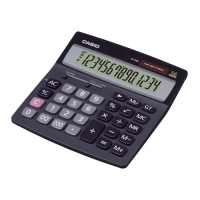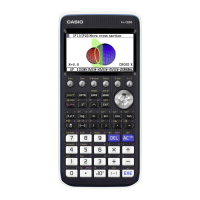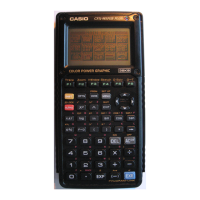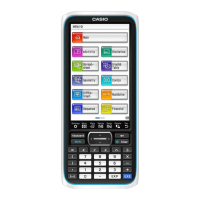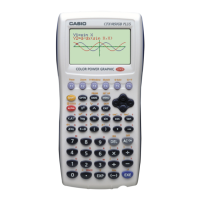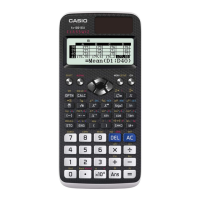Do you have a question about the Casio CALCULATOR FX-85GT PLUS and is the answer not in the manual?
Guidelines for battery safety, replacement, and proper handling to prevent damage.
Covers case removal, power on/off, auto power-off, and contrast adjustment.
Explains how key text colors indicate alternate functions.
How expressions and results are shown, including scrolling indicators.
Detailed meanings of various indicators shown on the calculator screen.
How to navigate menus to access calculator functions and options.
Procedures to select calculation modes like COMP, STAT, TABLE, and VERIF.
Accessing the setup menu to change various calculator parameters.
Sets angle units (Deg, Rad, Gra) and digit display (Fix, Sci, Norm).
Configures fraction display, recurring decimals, and decimal point formatting.
Adjusts STAT frequency display, recurring decimal display, and contrast.
Explains how to input calculations naturally, including priority rules and omitting symbols.
Details the order of operations for evaluating mathematical expressions.
How to input fractions and functions as they appear in textbooks.
How to use previously input values or expressions as arguments for functions.
How to use overwrite mode for input when Linear Display is selected.
Procedures for deleting characters, inserting text, and clearing the entire expression.
How to input and display recurring decimals using Natural Display.
Step-by-step guide for entering recurring decimal values.
How to cycle through display formats and conditions for recurring decimal display.
How to toggle results between fraction, decimal, and π forms.
Criteria that results must meet to be displayed as recurring decimals.
Practical examples of performing recurring decimal calculations.
How to toggle results between fraction, decimal, and π forms.
How to input and calculate with fractions using Natural and Linear Display.
How to perform percentage calculations, including increases and discounts.
Performing calculations with sexagesimal values and conversions.
Connecting expressions and transforming values into engineering notation.
Editing previous expressions and using the last result in new calculations.
Assigning values to variables (A-Y) and using them in calculations.
Using independent memory (M) and clearing all calculator memories.
Performing prime factorization on integers up to 10 digits.
Using sin, cos, tan, sinh, cosh, tanh, log, and ln functions.
Utilizing 10^x, e^x, x², x³, √x, and ³√x functions.
Using x!, Pol/Rec, Abs, Ran#, RanInt# functions.
Examples for calculations involving roots, factorials, and random number generation.
Demonstrations of coordinate conversion and nPr/nCr calculations.
Choosing between single-variable and paired-variable statistical calculations.
Using the Stat Editor to input data for statistical analysis.
Changing, deleting, or inserting data lines within the Stat Editor.
Recalling and calculating statistical values like mean, standard deviation, and sums.
Determining coefficients for linear, logarithmic, and other regression types.
Estimating y-values from a regression formula based on x-values.
Creating tables of f(x) values for a given range of x.
Checking if mathematical expressions are true or false.
Overview of calculation ranges, internal digits, and precision for standard calculations.
Input ranges and precision for trigonometric and other functions.
Detailed input ranges for various functions like cos, tan, log, powers, and roots.
How to view error locations and clear error messages.
Explains Math, Stack, Syntax, MEM, and Argument errors and how to resolve them.
Steps to check for errors and initialize the calculator before concluding malfunction.
Step-by-step guide for replacing the calculator's battery and initializing.
Details on power, dimensions, weight, and operating temperature.
Explains memory types and how to switch between calculator modes.
Explains differences in function calculation input with Natural Display.
| Type | Scientific Calculator |
|---|---|
| Memory | 9 Variables |
| Display Digits | 10 + 2 digits |
| Weight | 95 g |
| Auto Power Off | Yes |
| Power Source | Battery |
| Dimensions | 13.8 x 77 x 162 mm |

